A year and a half are here. And we already caught ourselves reminiscing about the past and talking about how time flies. No, we still didn’t forget jumps in development or difficulties of handling a newborn, but we do cherish the current moments a bit more. Now, after a year and a half, we really see how our little one has grown up.
Article Contents
1. The final Wonder week (we promise!)2. We (finally) walk and love all kinds of footwear
3. First real sickness
4. Eating and drinking skill-up – I can do it myself now (almost) without the problems
5. Sea adventures and travel woes
We talk about the seventeenth and eighteenth month of toddler life in this article. If you are interested in the earlier stages of the baby’s life and you want to read about the months from the first year, we got you covered in the first year of a child’s life section. And if you’re fresh parent, or if you’re just preparing to become one, you should start with the first month of the newborn’s life.
The final Wonder week (we promise!)
I know what you think, is there a month without some kind of jump in development?! It certainly seems there is always something going on. Well, doh, our babies are growing at a tremendous pace and learning new things daily. But good news, this is the last official wonder week. You remember wonder weeks, right? Jumps in development characterized by 3C: clinginess, crying, and crankiness. This one starts approximately around 16.5 months of age and lasts the whole month, till 17.5. Yes, a week is a lie.
It’s called World of systems and as the name suggests it’s all about baby understanding systems. That means they understand there are certain rules and regulations, but they also start to understand that they have control over their behavior. They will start to test your boundaries and notice your reactions. Now it’s a good time to establish some general rules. Do it in affirmative way – for example, instead of saying “We don’t throw our food”, say “We keep food on our plate”.
Sometimes all you need to avoid nasty tantrum is a bit of wordplay. And sometimes there is nothing you can do. Emotions are intense in this age and little ones still have a very limited way of expressing them. So tantrums will happen, but depending on how you deal with them, they can have very different outcomes. Although a popular and usually helpful (short-term) method, distracting is not the best way to deal with tantrums. It’s admittedly harder, but staying at that moment of anger and sadness with your child, will reap benefits later. It’s a great opportunity to explain feeling intense emotions is okay and to teach some emotional regulation.
We use reflection (“I see you are sad/upset/angry. You really want to do this now and we don’t let you.”) and usually she confirms, hug us strongly (hugging helps when we are upset!) and then we say “We can do that after…/we can do something else instead”). Often, the child needs to be heard and understood (aren’t we all?) and actual behavior is not that important to them. This usually helps when the situation didn’t escalate into a full-blown tantrum. We have a whole article about tantrums and how to deal with them, so if you’re interested, check it out.
Besides dealing with new and strong emotions, you can expect many new skills and upgrades after this wonder week. Increases in vocabulary, understanding, new interests – especially in puzzles and other interactive toys, sorting, fine motor skills… Don’t forget that there are individual differences.
Even though this is last (10.) official wonder week, that doesn’t mean there won’t be any more jumps in development and challenging behaviors which accompany them. But there will be even more individual differences from now on, so no point in giving any kind of time tables. And a big disclaimer, “wonder weeks” are presented as some accurate “schedule”, but of course, there are just rough guidelines. We found that they are fairly in sync with some things we noticed and that helps us stay sane. Jumps in developments are much easier to deal with when you know it’s a normal phase and not a sign your child has issues or you have failed as a parent. Reassuring!
We (finally) walk and love all kinds of footwear
And that day finally came! Our little one decided to stand on her two legs and make her first 8 steps in a row. That is the time we officially say she started to walk. There were times before when she made two, four, even five steps but that was it. She didn’t show interest in standing on her legs that much. All changed at the beginning of her eighteenth month and those first eight steps in a row. After that, she was just standing up and using her two legs for walking.
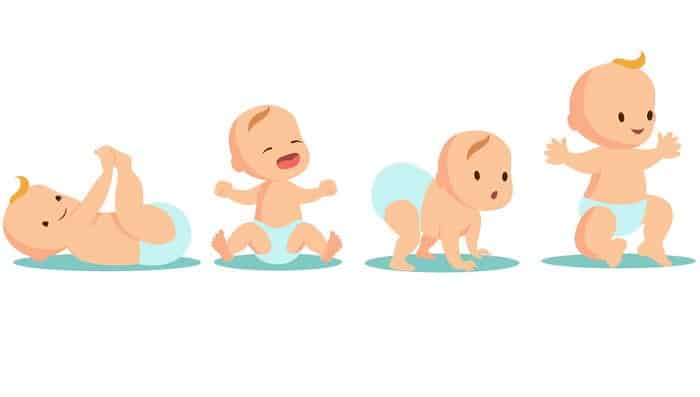
We talked about walking already in the thirteenth and fourteenth-month article and how there are big individual differences. We were aware of them but to be frank, we did “annoy” her and even ourselves with constant stroking to walk on her two legs. And when people asked us, we were defensive about that topic even before it came up. It’s weird how even when you are aware of those individual differences, we are still pressured by social expectations. So we would like to emphasize this one more time – there is a huge range in acquiring milestones. And we hope this will ease your feelings a bit if you think your child should already be doing something that it is not doing.
It really is as people say (and we didn’t believe). When the child is ready, it will just start to walk. Her walking skills are developing at a lightning pace. The first few days we had to remind her to stand on her feet – I guess it’s hard to get rid of one-year-old habit – crawling. But after less than a week, we didn’t even have to mention it again. Walking become her default moving method.
Another interesting thing that happened at the same time was her approval of footwear. The day after her first steps, we managed to put shoes without any problems. We have also talked about the problems with shoes in the article about a thirteenth and fourteenth month. And suddenly, shoes are on her feet with no issue. And the next day, she even points them and wants to put them on. Actually, her next longest walking was to the shoe store. We were in the shopping mall and the girl decided to leave the playing area and walked to the nearby shoe store to look at the shoes! Now, each time we enter the shoe store we need to put a lot of energy in explaining that she can’t try on every shoe she sees.
The moral of the story? You never know what is coming the next day. Literally, one day they hate something so much, and next, it’s their favorite thing in the world! If we could only get rid of the fear of vacuum cleaner that easy… But that is a story for another time.
But we need to say that not all is roses and butterflies. Now you will meet your nemesis – sharp corners and pointy objects. Super awareness and lightning reflexes required! When they start to walk, they are like little drunkards. And there is just no way of stopping them! Our little one just walks walks walks. In the apartment she just goes from wall to wall, walks in a circle, you know, walking is an activity by itself. And falling and hitting becomes a standard occurrence. When we were on vacation, she hit herself so hard on the edge of the furniture that I thought she cut herself to the skull. Fortunately, all was good, except for having a bruise for more than a week and looking like she survived world war 2 at that time. But after that incident, we found a new appreciation for big open spaces like meadows. At least we know when she falls, she will fall on the ground and not hit her head in the process.
But toddlers are progressing so amazingly fast (no wonder, they are practicing walking in every second of their waking hour) that I think we will be writing about running in the next article.
First real sickness
Another milestone achieved: first big sickness. It was scary and stressful, but we came out wiser and better prepared for the inevitable – more of that. It started with somewhat uncharacteristic drowsiness on a playground. We went home and I measured her temperature – 38.8 C under the armpit. Ouch. I gave her medicine and she went to sleep. The temperature dropped and all seemed fine – she ate good and was in a great mood. But 5h later, the temperature went up again. I know the temperature is not a disease by itself, but a symptom of the body fighting an infection, but it still scares me a lot.
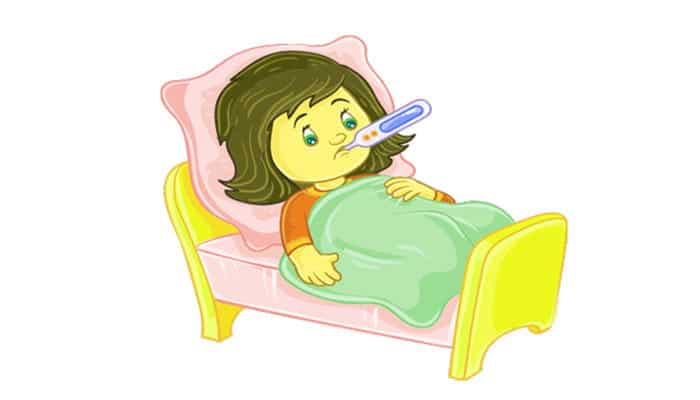
I have a history of febrile convulsions myself and that has a hereditary component. Therefore, we tend to react as soon as we notice temperature raising. Combining physical ways of lowering temperatures, such as bathing in lukewarm water or wrapping the whole body in a wet sheet, with paracetamol, we managed to keep it under 39.
This dance continued for the whole next day. Every 4-5 hours (after medicine stopped working), the temperature would start to rise. The third day we went to the doctor, who sent us to do some blood work but confirm that there are no other signs of illness. Blood tests showed it’s some kind of a viral infection and the doctor said we can expect the appearance of rash as well.
And as on the clock, the next day there was no temperature and she got a terrible rash which lasted a day. Some googling produced a name for this infection: Three-day fever or roseola. It’s actually one of the most common infectious diseases in early childhood. Most children get it between 6 months and 3 years of age. The cause is human herpesvirus 6 and the only symptom is a quick onset of a very high temperature (often 40 C) which lasts 3-5 days and rash afterward.
Another thing we learned from this experience is that not all medicine tastes the same. And that you can’t explain to a toddler that she must drink that yucky medicine. Oh, she was very reasonable. She gave medicine to her plushies (it was an epidemic in our house) and understood we have to take it when we are sick. But as soon as that spoon came in her mouth she was spitting and crying. Some desperate googling of how to give medicine to a toddler, revealed that different brands have different taste. To the pharmacy! And voila, the new medicine we bought was so good she asked for more.
Eating and drinking skill-up – I can do it myself now (almost) without the problems
Another thing we noticed in the seventeenth month is our daughter upgraded skill in handling the spoon and cup. She really got proficient and with the end of month eighteen, we can say she really mastered it! When she decides to showcase that skill.
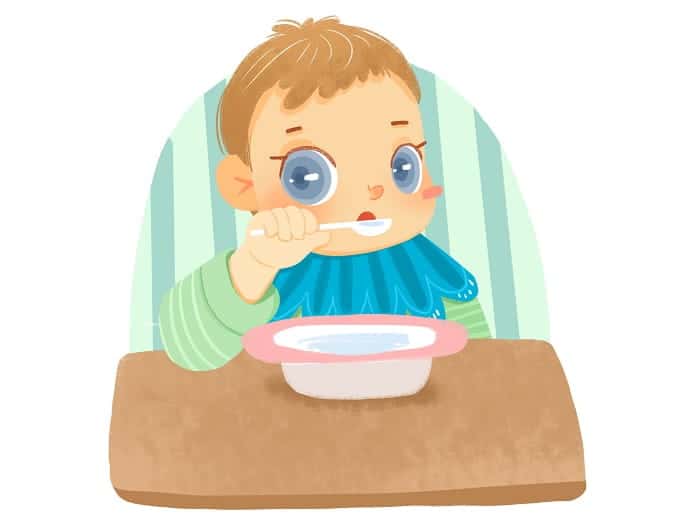
Frankly, it’s not like there is no more mess, because there is! But that is only because our little explorer still likes to play with food and look if maybe her broccoli got legs today and will run away when she throws it on the floor. And putting cucumber in sour cream is so much joy. So there is still a mess but only when she feels like playing and not eating.
And when she is hungry or when there is her favorite food on the plate, each and every piece will end up in her mouth flawlessly. She now prefers eating with the spoon and will demand it if we forgot to give it to her by accident. She is also good with a fork but we still avoid the fork as much as possible because we are afraid of possible injury when she starts to play with food and dish.
Drinking is also much better now. We started using normal bottle and cup for her everyday drinking needs. We still help her with the bottle but she controls the tilt, and from most of the drinking situations we exit still dry. And with the cup, it’s even easier. She holds it alone and manages to drink without help. And the cup took so much beating from our little thrower that one handle is broken, but that doesn’t bother her to drink like a pro. You may be wondering why we use a damaged cup. It has a train on it. And she loves trains. Enough said, right?
And what about eating habits? Well, it’s really hard to say. It would be best described as chaotic! One day she eats good, next day barely touches food. So each new meal is a mystery and we don’t know if the food will end in her belly or as a toy. But we did notice some favorite food that exclusively ends in her stomach. Currently, her top favorites are olives, yogurt, and sour cream. And salmon. Salmon is still holding but slowly losing its power. Who knows what will she prefer next, but at least we are happy she still doesn’t show much interest in sweets.
Sea adventures and travel woes
We went to the sea this summer. Her car seat was getting smallish, so we had to buy a new one. There are so many car seats on the market, but after some research, we eliminated most of them. Before, we looked forward to the front-facing car seat, yet we will stick with the rear-facing till 18kg (or maybe more!).
Why you ask? Current safety standards advise that children should stay rear-facing for as long as possible. The chance of severe head and neck injuries for babies and toddlers is greatly reduced in this type of car seats. It distributes the impact of a crash along the back, neck, and head, as opposed to hips and shoulders which are still not completely hardened. Head and neck are also much better supported when rear-facing. So, we felt pretty good with our research and the car seat we picked. And L.? She still didn’t like it that much, but it’s getting better. We didn’t go too far luckily, knowing she is not a fan of driving.
Still, we had to take out big guns. Traveling in her usual sleep time. That worked pretty well, she slept 85% of the way. But trust me, that 15% of the trip can be a nightmare if not prepared. Songs and stories are always a hit. Especially some of her favorites, which she could (and frequently is) listening on a loop. I’m still doing it the old-fashioned way, by telling them myself, but thinking of improving the process by taping it.
Sea was the love at first sight. No wonder, her favorite books are sea-themed – pirates, whales, ships – can’t get enough of them. She didn’t swim by herself but enjoyed splashing in our arms. But most of our time at the beach was spent playing with the pebbles and getting splashed by the waves. Fun! All in all, we had a great time, even though we decided not to bring her stroller and forgot our baby carrier at home (ouch!).
And that is the gist of the 17 and 18 months with baby. Now the first year and a half are covered (and survived) and we are still surprised on a daily basis. So join us in the second half of the first year because we are sure many new challenges and surprises await. And until then, may the luck, wisdom and iron nerves be with you.
If you’re searching for some great STEM Activities for Kids and Child development tips, you’re in the right place! Check the Categories below to find the right activity for you.

STEM Science
Videos, guides and explanations about STEM Science in a step-by-step way with materials you probably already have at your home. Find new Science ideas.
Read more
STEM Technology
Videos, guides and explanations about STEM Technology in a step-by-step way with materials you probably already have at your home. Find new Technology ideas.
Read more
STEM Engineering
Videos, guides and explanations about STEM Engineering in a step-by-step way with materials you probably already have at your home. New Engineering ideas!
Read more
STEM Math
Videos, guides and explanations about STEM Math in a step-by-step way with materials you probably already have at your home. Find new Mathematics ideas.
Read more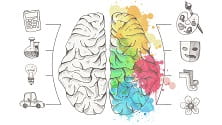
Psychology
Find out all about development psychology topics that you always wanted to know. Here are articles from child psychology and development psychology overall.
Read more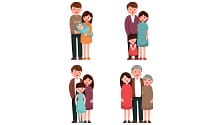
First year of Child’s Life
Following a Child’s development every month from its birth. Personal experiences and tips on how to cope with challenges that you will face in parenting.
Read more
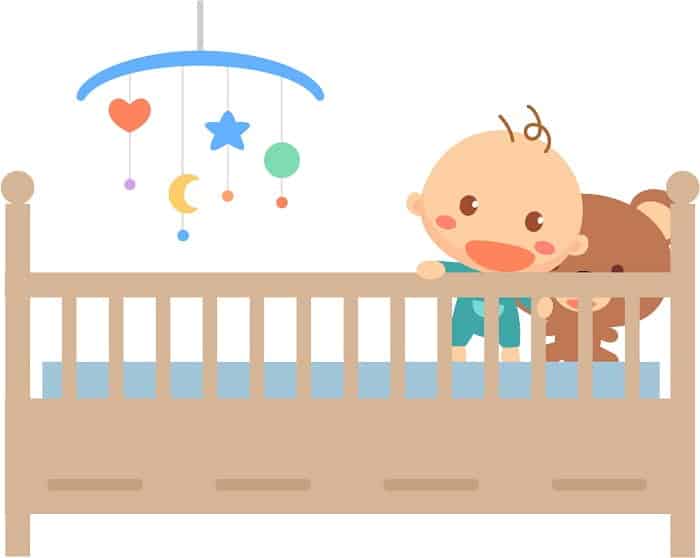
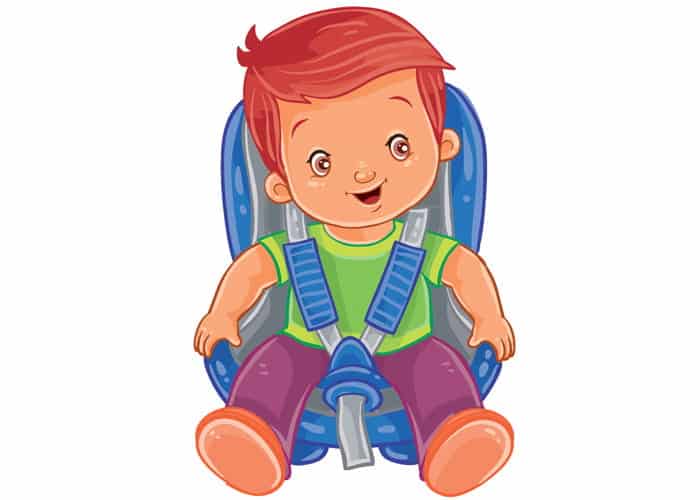
2 thoughts on “What to expect from the Baby in Seventeenth and Eighteenth Month”